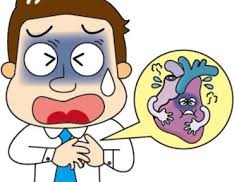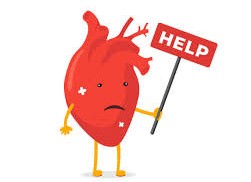Understanding the Risk of Myocardial Infarction: Causes, Symptoms, and Prevention


What Is the Risk of Myocardial Infarction and Why Should We Care?
Myocardial infarction, more commonly known as a heart attack, remains one of the leading causes of death worldwide. But what exactly is it, and why is understanding its risks so important?
A myocardial infarction occurs when blood flow to a part of the heart is blocked, typically by a blood clot or plaque buildup, causing damage to the heart muscle. Recognizing the risk factors and early symptoms can be life-saving.
- Definition: Myocardial infarction is the death of heart muscle due to lack of oxygen-rich blood.
- Importance: Early intervention can reduce the damage and improve recovery.
- Global impact: Millions are affected annually, with high rates of disability and death.
- Preventability: Many risk factors are modifiable through lifestyle changes and medical interventions.
Who Is at Risk of a Heart Attack?
Understanding who is most at risk can help target prevention strategies and save lives. Multiple factors—some controllable and others not—can contribute to the likelihood of having a heart attack.
- Age and gender: Risk increases with age; men are at higher risk, although postmenopausal women also have elevated risk.
- Family history: Genetic predisposition to heart disease.
- Existing health conditions:
- High blood pressure
- Diabetes
- High cholesterol
- Lifestyle factors:
- Smoking
- Sedentary behavior
- Poor diet
By identifying these risk factors, individuals and healthcare providers can work together to implement preventative measures.
What Are the Warning Signs of a Myocardial Infarction?
Recognizing the signs of a heart attack is crucial to receiving timely medical help. While symptoms may vary, some common warning signals should never be ignored.
- Chest pain or discomfort: Often described as pressure, tightness, or fullness.
- Upper body discomfort: Pain in shoulders, arms, neck, jaw, or back.
- Shortness of breath: May occur with or without chest discomfort.
- Other symptoms:
- Cold sweats
- Nausea or vomiting
- Lightheadedness or sudden dizziness
Some individuals, especially women and people with diabetes, may experience less typical symptoms, making awareness even more critical.
How Can You Reduce Your Risk of a Heart Attack?
Preventing a heart attack starts with managing risk factors and making healthy lifestyle choices. Prevention is not just about avoiding a heart attack—it's about improving overall cardiovascular health.
- Eat a heart-healthy diet:
- Reduce saturated fats and cholesterol
- Increase intake of fruits, vegetables, and whole grains
- Exercise regularly: At least 150 minutes of moderate aerobic activity per week.
- Avoid tobacco use: Quit smoking and avoid secondhand smoke.
- Manage stress: Chronic stress can increase blood pressure and heart rate.
- Regular health checkups: Monitor blood pressure, cholesterol, and glucose levels.
These changes can significantly lower the risk of myocardial infarction and contribute to a longer, healthier life.
What Role Does Lipitor (Atorvastatin) Play in Preventing Heart Attacks?
Lipitor (Atorvastatin) is a prescription medication classified as a statin, and it is widely used to manage cholesterol levels, a major contributor to heart attacks. Its benefits extend far beyond simply lowering cholesterol.
- Mechanism of action: Lipitor blocks the enzyme HMG-CoA reductase, which is essential for cholesterol production in the liver.
- Cholesterol management:
- Decreases LDL (“bad”) cholesterol
- Increases HDL (“good”) cholesterol
- Lowers triglycerides
- Heart attack prevention:
- Reduces plaque buildup in arteries
- Improves overall blood vessel health
- Lowers risk of future cardiovascular events
- Additional benefits: Shown to reduce inflammation in blood vessels, which further reduces heart attack risk
Doctors often prescribe Lipitor for patients with existing heart disease or those with multiple risk factors. It is most effective when combined with dietary changes and regular exercise.
How Is a Heart Attack Treated and Prevented Medically?
Medical intervention is often necessary both to treat heart attacks and to prevent them in high-risk individuals. One of the most effective ways to reduce cardiovascular risk is through medication.
- Medications used after a heart attack:
- Aspirin to thin the blood
- Beta-blockers to reduce heart workload
- ACE inhibitors to lower blood pressure
- Statins to lower cholesterol:
- Lipitor (Atorvastatin) is among the most trusted and widely prescribed
- Helps reduce future cardiac events and improves long-term heart health
Lipitor, when combined with lifestyle changes, plays a crucial role in reducing the overall risk of myocardial infarction and improving long-term cardiovascular outcomes.
While the risk of myocardial infarction can be daunting, it is not inevitable. Through awareness, early detection, and a commitment to healthy living, individuals can greatly reduce their chances of suffering a heart attack. Medical treatments such as statins—particularly Lipitor—provide additional protection for those at higher risk. By taking proactive steps today, we can protect our hearts and lead healthier, more resilient lives.
Article Post: Editorial Team of RXShop.md
(Updated at May 24 / 2025)

